- Bernard Preston homepage
- Breakfast
- Is Puffed Wheat a Whole Grain
Is puffed wheat a whole grain?
Is puffed wheat a whole grain is a question often asked by parents wanting to know what to feed their kids for breakfast. There is probably no other food that is subject to such lies and deception.
It is manufactured with techniques not dissimilar to making popcorn. High temperature is used and, to get a texture like flakes the grains are extruded under high-pressure; so far no real problems.
There are two ways in which manufacturers now ruin the whole-grain; firstly what they add and secondly what they remove.
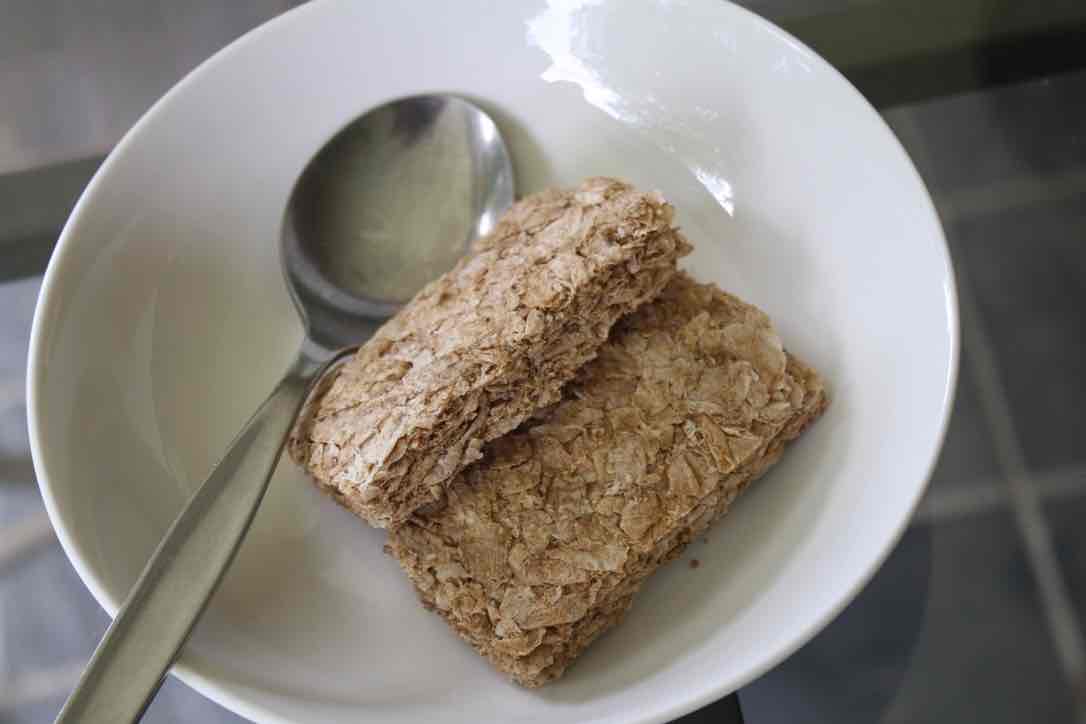
What are examples of whole grains?
Whole grains are hard to come by. That which most readily comes to mind is corn on the cob; it's completely unrefined. But once milled into grits you may never know.
The same applies to flour. True wholemeal is when there is no separation of the three streams.
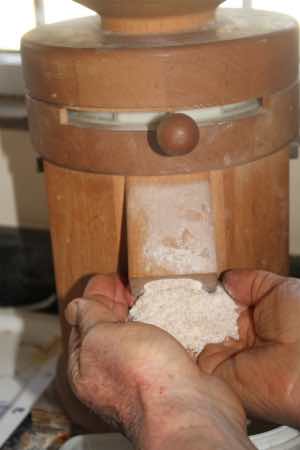
Bulgur is also a whole grain; wheat kernels are boiled, dried and milled. Unpolished rice and quinoa are other examples.
How much sugar is added to your puffed wheat?
With twice as many people dying from the diseases associated with obesity world-wide as compared to starvation, medical scientists have found that the chief culprit in the main is not the fat in our food but the refined carbohydrate; and in particular sugar.
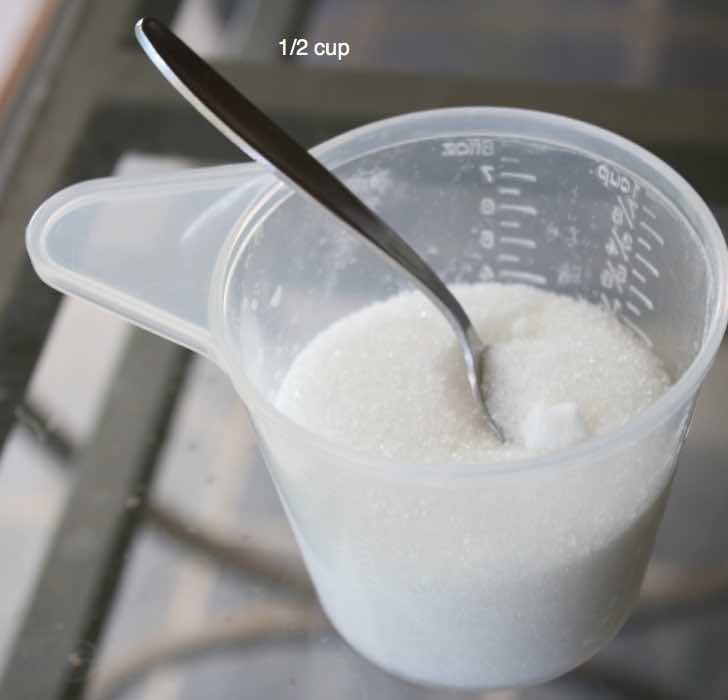
Whilst heart associations are recommending no more than about 7 teaspoons each day, weighing about 30 grams the average person eating typical grocery store food is consuming nearly half a cup daily; in fact some reports say far more.
South African adolescents are consuming nearly two-cups of sugar every day[4]; it's unbelievable. Much of it is in soft and energy drinks.
Half a US cup of sugar weighs 100 g, which is 24 tsp; nearly four-times the recommended amount. South Africans are matching that; obesity is equally a problem here.
In particular about 20 percent of children are obese and, worse nearly a half of them are in the extreme range once they reach the age of 12[1]. Almost a third are permanently stunted.
So how much sugar is in your child's puffed wheat? The two worst companies are Kelloggs and Post making cereals that contain more than 50-percent by weight.
Whilst they would obviously like you to enjoy large servings, the recommendation is 30g so that it appears that the sugar and calories are not excessive; in practice most folk have at least a half more than that.
And if you ate as much as shown on the packaging you would be having three-times as much, or 90g according to researchers from Cardiff University[2].
Then we could go on about the oils and salt added. For example Kellogg's crunchy-nut oat granola, over and above the sugar, contains 5.4g of saturated fat in a portion; which is about a quarter of your daily limit.
To make matters worse for me as a beekeeper Kelloggs have played the name-game, back and forth between calling their product sugar and honey smacks; the latter sounds more nutritious.
But in fact the cereal contains 16g of sugar in the small recommended serving-size; over a half by weight.
Honey makes up only a small part of the sugars and once-heated and processed, it is probably has little more virtue than sucrose in any case.
What manufacturers remove from the whole grain
There is a big fat lie in the milling industry; manufacturers are allowed to call their products whole grain provided they do not remove more than 40-percent of the goodies; the germ and the fibre. That is where the minerals and vitamins are located.
Arrowhead Mills makes one of the better cereals but with all the fat, including the vitamin E extracted it is extremely misleading to call it 100 percent whole-grain.
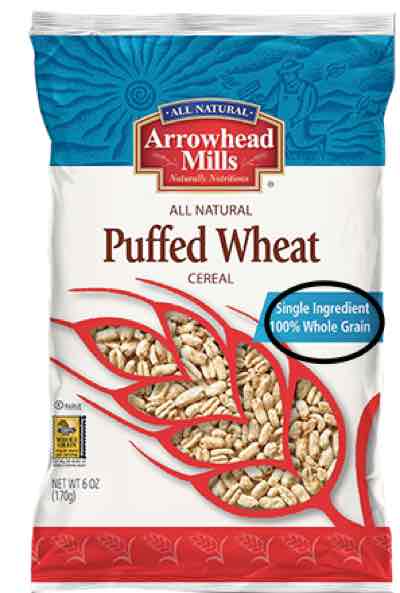
Per 100g
Nutrition facts
Total fat
Dietary fibre
Calcium
Puffed wheat
0g
± 10g
0g
100% wholemeal
0.4 grams
10.7g
44mg
True whole grain contains some very nutritious polyunsaturated fat; all of it is removed with the germ in the manufacture of puffed-wheat.
There are only two essential fatty acids which have to be ingested from our food, and both of them are to be found in 100 percent whole-grain wheat; both are refined out of most cereals.
- Linoleic acid (an omega-6)
- Alpha linolenic acid (an omega-3)
They react synergistically to an invading pathogen, one increasing the inflammatory response and the second softening that reaction. Out of balance, when the omega-3 is deficient leads to many chronic diseases.
Researchers have shown that even as a supplement wheat germ oil has an anti-atherosclerotic effect. It would be more effective from 100 percent wholegrain bread.
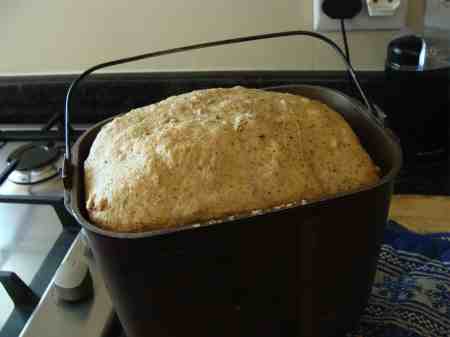
Is puffed wheat a whole grain?
Is puffed wheat a whole grain is a subject filled with controversies and big fat lies. No, it certainly is not in most cases. Wheat-bix is one of the exceptions to the rule; it contains all the oils.
The wheat grains, unlike many other cereals, are not first refined to flour; they are simply cooked under pressure, crunched up in a mill and forced into a mold Then the blocks are baked further in an oven.
Weetabix as it is called in some countries is indeed a whole-grain. It is more like bulgur than the many refined breakfast-favourites.
But how much sugar does your child then add to it? Natural honey is far better but quite difficult to get; you are unlikely to find it on supermarket shelves. Unprocessed from a local beekeeper it has a low glycemic index[5].
The health grain project
The health grain project[3] of 2014 points in some detail all the pitfalls surrounding the term wholemeal, seeking to define exactly what manufacturers should be doing; however in most of the world this is still not legally enforced with much lies and deception in food-labelling.
Kellogg's frosted mini-wheats is a case in point; they claim that it is made with 100% whole grain, yet no vitamin E is listed in the ingredients.
"Nothing is less productive than to make more efficient what should not be done at all."
- Peter Druker
Lignans
Lignans are natural phytonutrients found in the bran of whole grains and seeds; mostly they are refined out of flour. Having a structure similar to female oestrogen they give profound protection from malignant breast tumours and cardiovascular disease.
Knowing at least something about them is important for every person who wants to be strong and free from disease. What are lignans is a synopsis in layman's terms of this complex subject.
Gluten
Nearly 40% of Americans are buying gluten-free products; they are mostly ultra-refined. But only around one percent suffer from Coeliac Disease.
- The numbers behind obesity @ Medical News Today.
- Billboards on our Breakfast Tables' fuelling decay and obesity epidemics, say dentists
- The HEALTHGRAIN definition of ‘whole grain’
- Evidence to support a food-based guideline on sugar consumption in South Africa
- Glycaemic and insulin properties of German honeys.
When browsing use right click and "Open Link in New Tab" or you may get a bad gateway signal.
Newsletter
Our newsletter is entitled "create a cyan zone" at your home, preserving both yourself and Mother Earth for future generations; and the family too, of course. We promise not to spam you with daily emails promoting various products. You may get an occasional nudge to buy one of my books.
Here are the back issues.
- Lifestyle and ideal body weight
- What are ultra-processed foods?
- Investing in long-term health
- Diseases from plastic exposure
- Intensive lifestyle management for obesity has limited value
- A world largely devoid of Parkinson's Disease
- The impact of friendly bacteria in the tum on the prevention of cancer
- There's a hole in the bucket
- Everyone is talking about weight loss drugs
- Pull the sweet tooth
- If you suffer from heartburn plant a susu
- Refined maize meal and stunting
- Should agriculture and industry get priority for water and electricity?
- Nature is calling
- Mill your own flour
- Bake your own sourdough bread
- Microplastics from our water
- Alternative types of water storage
- Wear your clothes out
- Comfort foods
- Create a bee-friendly environment
- Go to bed slightly hungry
- Keep bees
- Blue zone folk are religious
- Reduce plastic waste
- Family is important
- What can go in compost?
- Grow broad beans for longevity
- Harvest and store sunshine
- Blue zone exercise
- Harvest and store your rainwater
- Create a cyan zone at your home
Did you find this page interesting? How about forwarding it to a friendly book or food junkie? Better still, a social media tick would help.
- Bernard Preston homepage
- Breakfast
- Is Puffed Wheat a Whole Grain
Address:
56 Groenekloof Rd,
Hilton, KZN
South Africa
Website:
https://www.bernard-preston.com